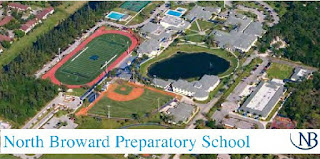(This Post was originally featured on the About.me Blog on 9/14/16)
In the fall of 2012, in order to prepare students for college applications, internships and almost unavoidable career changes, I was asked to create a high school level course focusing on digital citizenship and online communication. The course would formally be titled, Personal Branding and Digital Communication and would provide the tools necessary for students to navigate an ever changing digital environment. At the time, in 2012, not knowing the difference between a tweet and a blog I ventured off into uncharted territory with a background in History and Research and a passion for creating something original, fresh and relevant to meet the needs of diverse students at the North Broward Preparatory School in Coconut Creek, Florida.
Rather than taking a reactive approach to digital citizenship and trying to “fix” digital blemishes, I wanted to create an environment where students would be comfortable using social networks to explore their passions and share them with the world. Lessons would be grounded in ideas like leadership, ethics, digital storytelling, marketing and business and help students separate themselves from a crowded and competitive field of their peers. If “personal brand” and “reputation” are synonymous than students would craft their brands based on the knowledge and connections learned online and through their own personal experiences and stories.
Whether online or off, we all have a brand. The people you encounter develop an opinion of you starting from the moment that you meet and they learn what they can expect and depend on you for. Knowing this, the key to the “Personal Branding” puzzle was clear. If you know what you stand for you can use the tools available today to guide others to form a clearer picture of you. Today, my students spend much of their time reflecting on who they were, who they are and who they hope to become. From logos and brand statements to followers and postings students begin to develop a personal network of individuals who they hope to learn from and share their stories with.
Five Steps for High School Students Looking to Develop a Personal Brand
- Find your passion(s) - From the court to the stage each of my students is asked to identify what motivates and interests them from both an academic and extra curricular perspective. This requires reflection and goal setting with an eye on the college admissions process and potentially more long term dreams. Come up with a list of your various interests and start from there. Along the way your list is sure to grow as you begin to realize the vast information that exists and is being shared.
- Learn from others - A few years back I had the pleasure of meeting Pat Williams, the Executive Vice President of the Orlando Magic. At the time, he told me that anyone can become an expert if they are willing to read ten books on a particular topic. I wanted to apply this to the art of digital communications. Through the web students may access video tutorials, blog posts, hashtags and experts in almost every imaginable field and use the accumulated knowledge to become the type of expert Pat Williams described.
- Share your learning - In order to build a reputation and a personal brand you will need to make your learning visible. Use social networks to retweet others and leave meaningful, constructive and thought provoking comments on the blog posts that you find interesting. Join chat rooms and discussion forums so that you can share in professional dialogues and gain an experience usually reserved for those in “the biz”.
- Create original content - While consuming is great for digesting knowledge and understanding various viewpoints, true learning, understanding and “branding” comes when you are comfortable enough to share your own thoughts, experiences and knowledge on a specific topic. Try shooting and editing a video tutorial or crafting an interesting blog that helps readers connect with you emotionally.
- Connect your networks - Managing the social networks was a challenge for many students until the discovery of about.me which they now use to tie everything together. For the first time, anyone with a link can follow along in the individual experience that has been crafted. Consider adding an about.me link to your signature line and point visitors in the direction that they can best learn about your brand.
At some point in this process students will discover their voice and once they do they are far less prone to the potential hazards of the digital world. Making decisions based about what they post and share becomes easier once they understand their own values and have a channel to express them. I would argue that developing a personal brand that best represents who you are is a lifelong process. Although the audience may change over time, the message that your brand presents will usually remain consistent and provide insight into your personal passions and expertise.

No comments:
Post a Comment